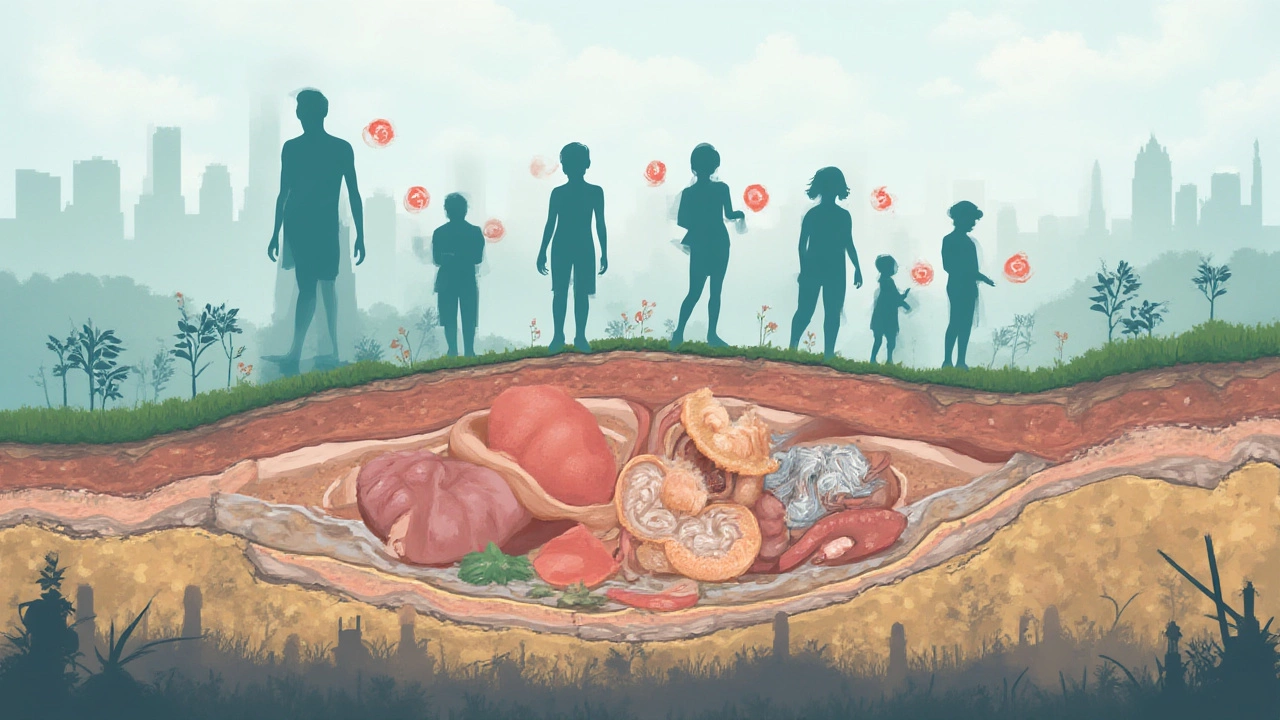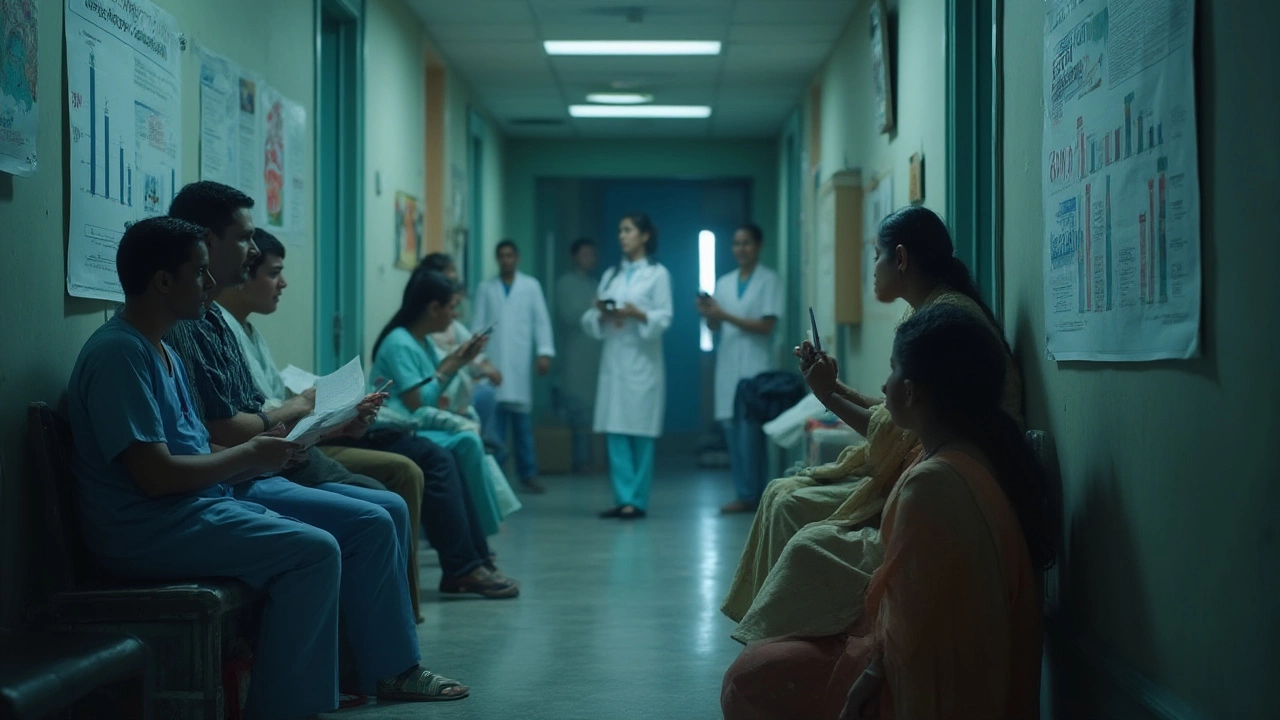Cancer rarely plays fair, but some types have a reputation for being particularly ruthless. The numbers don’t lie: certain cancers come with survival rates that are shockingly poor, and not just because they’re more common or because people wait too long to see a doctor. The biology of the disease, its hiding places, and our limited treatment options often work together, stacking the odds. When you look closer, it’s clear that behind every grim statistic is a chance for early detection, smarter choices, and, sometimes, just a dash of good luck.
Why Do Some Cancers Have Poor Survival?
Let’s get something straight right off the bat: not all cancers behave the same way. While some drag their feet and show up early on scans or blood tests, others keep quiet, hiding in the shadows until they’re well-established. Pancreatic cancer, for example, often gives no hint until it’s advanced. And when it finally makes itself known, it’s already tangled up with vital blood vessels, making surgery risky or even impossible. There’s also the body’s natural landscape to consider—some cancers grow in organs hard to reach, like the brain or liver. Geography can be as deadly as biology here.
Another factor is what researchers call ‘aggressiveness.’ Fast-growing tumors, like glioblastoma in the brain, don’t wait around long enough for the immune system or current therapies to do their job. Some cancers quickly invade nearby tissues or travel through the bloodstream, setting up shop far from where they started. This process, called “metastasis,” turns a manageable disease into a global crisis for the body. Treatments that work well against slow-moving types like certain skin cancers are barely speed bumps for these aggressive invaders.
Survival rates are also shaped by the limited response of some cancers to standard treatments—be it surgery, radiation, or chemotherapy. Ovarian and esophageal cancers, for instance, may not respond well to chemotherapy or may only shrink temporarily before roaring back stronger than ever. Other cancers, like some liver cancers, can actually “hide” from the immune system, making new treatments like immunotherapy hit a frustrating wall.
Money, technology, and awareness play key roles, too. It’s no coincidence that cancers with lots of public attention (think breast or prostate) tend to have better outcomes thanks to early screening programs and targeted research funding. Rarer or less-talked-about cancers often get the short end of the stick, with outdated treatments and a lack of investment in new approaches.
This messy tangle of factors means what you don’t know really can hurt you. But the more familiar you are with the warning signs and the typical stories behind these less-survivable cancers, the better your odds to beat them at their own game.
The Big Names: Cancers With Notoriously Low Survival Rates
You’ve probably heard about some “bad” cancers in passing, but the numbers really bring it home. Pancreatic cancer sits near the bottom of almost every survival list. According to the American Cancer Society, the five-year survival rate for pancreatic cancer in the US is just around 13% as of 2024. For the most common type, pancreatic ductal adenocarcinoma, it can be even lower if not caught early. What makes it worse? It’s stealthy; symptoms like back pain or unexplained weight loss usually don’t show up until it’s too late to remove with surgery.
Then there’s glioblastoma, the most aggressive form of primary brain cancer. Hollywood actor Tom Parker’s high-profile battle made headlines, but most people don’t realize the median survival after diagnosis, with all available treatments, is roughly 12 to 15 months. Only about 7% of patients live five years beyond diagnosis. The tumor tends to come back even if almost all of it is surgically removed because its tendrils slip into healthy brain tissue.
Esophageal cancer is another tough opponent. Although not as common as some other cancers, it has a five-year survival rate of only about 20%, dropping sharply for advanced stages. By the time symptoms appear—trouble swallowing, weight loss—tumors are typically large and may have already spread.
- Pancreatic Cancer
- Glioblastoma (brain cancer)
- Esophageal Cancer
- Small Cell Lung Cancer
- Liver Cancer (hepatocellular carcinoma in particular)
- Gallbladder Cancer
- Ovarian Cancer (especially advanced cases)
- Stomach (Gastric) Cancer
Small cell lung cancer is super aggressive, too. Even though lung cancer screening is making strides, small cell makes up about 10-15% of cases, with a wickedly fast pace and a five-year survival rate usually under 7%. The problem? It loves to spread—even before the original tumor gets large enough to spot on a regular scan.
You might also be surprised by gallbladder cancer, which is rare in many countries but devastating where it strikes hardest—like parts of South America and India. Its five-year survival rate can plummet below 15% because by the time symptoms pop up, it’s typically incurable.
Here’s a handy breakdown for a few of these poor-survival cancers:
| Cancer Type | 5-Year Survival Rate (approx., 2024) | Key Challenge |
|---|---|---|
| Pancreatic | 13% | Hard to detect early; spreads fast |
| Glioblastoma | 7% | Invades brain tissues; recurs often |
| Esophageal | 20% | Late diagnosis, aggressive growth |
| Liver (HCC) | 20% | Often in people with cirrhosis or hepatitis |
| Gallbladder | 15% | No early symptoms; aggressive |
| Small Cell Lung | 7% | Rapid growth and spread |
| Ovarian (advanced) | 30% | Vague symptoms, late detection |
Each type comes with its unique mix of obstacles and heartbreak, which is why research keeps many top oncologists up at night. But it’s not all doom and gloom: some advances—like targeted therapies and improved genetic screening—are starting to make cracks in the wall.

Lesser-Known Cancers With Brutal Prognoses
Picture this: someone complains about mild stomach issues and a little fatigue. No big deal, right? But sometimes, these nothing symptoms hide stomach (gastric) cancer, which still claims hundreds of thousands of lives each year. In places like Japan, regular screenings boosted survival, but in much of the rest of the world, the five-year survival hovers around just 32%, and for advanced stages, it can sink below 10%. Most of these cases are discovered after the cancer has invaded layers of the stomach wall or spread to nearby lymph nodes.
Then there are bile duct cancers (cholangiocarcinoma). The name hardly rolls off the tongue, and neither do the survival numbers. These cancers fly under the radar, usually emerging in people over 50. The challenge? Most cases don’t produce symptoms until the tumor blocks a bile duct, and by then, the only hope may be a complex surgery that not everyone can have. Average five-year survival depends on the location but can range from 10% to 25% at best.
Peritoneal cancer sounds obscure, but it’s an aggressive foe that affects the lining around the abdominal organs. Often, it’s mistaken for other issues and only found during surgery or imaging for something else. Once it’s found, it’s usually advanced, strongly resembling late-stage ovarian cancer in how it spreads and how quickly it gets out of control. Even with successful surgery and chemotherapy, five-year survival rates float between 15% and 30%.
Thymic carcinoma, which starts in the small gland in your chest, is rare but can be vicious. The numbers? For advanced thymic carcinomas, survival rates can dip below 30%. Its biggest trick: looking harmless on scans until it’s already grown into nearby organs or spread through the chest.
Another sneaky threat is mesothelioma—the cancer caused by asbestos. The lag time between exposure and disease can be 20-50 years, so most people are completely caught off guard. Median survival is just 12-21 months, depending on the type and stage.
Here’s what unites these lesser-known killers:
- Quiet symptoms until late stages
- Often found accidentally
- Fewer treatment options
- Limited awareness in the public and even among doctors
Whatever the location, catching these cancers early gives the best shot at a longer life, but that’s rare. This harsh reality is why raising awareness actually saves lives—sometimes the only early warning comes from a friend, a relative, or a passing line in an article like this one.
Charting the Early Warning Signs
No one wants to be a hypochondriac, but when it comes to *cancers with poor survival*, a little bit of paranoia isn’t such a bad thing. You don’t have to memorize every random symptom, but it definitely helps to know which red flags you shouldn’t ignore. For pancreatic cancer, things like unexplained jaundice (yellowing skin or eyes), persistent back or abdominal pain, and sudden, unintended weight loss aren’t ‘just stress’ or an off week. Even itching or a new case of diabetes could be related, especially if you don’t fit the classic profile for those issues.
Liver cancer’s clues can masquerade as anything from fatigue to swelling in the belly, or a sudden loss of appetite. Since most people at risk already have liver problems (from alcohol, fatty liver disease, or hepatitis), screening is hugely important. Simple ultrasounds and blood tests like AFP can make a difference if done regularly in high-risk folks.
Watch for swallowing difficulties, chest pain, or persistent hoarseness in the case of esophageal cancer. These aren’t the ‘usual’ indigestion and can get worse quickly. For ovarian cancer, keep an eye out for bloating, quickly noticing you’re full after eating, or changes in urination or bowel habits—if they last more than a few weeks, don’t wait to ask for a checkup.
People often miss the subtle signs of brain cancers like glioblastoma—headaches that keep getting worse, sudden vision changes, or odd personality shifts. It’s easy to chalk this up to stress or age, but these are worth taking seriously, especially if they’re new or sudden.
Here are smart tips to boost your odds at catching things earlier:
- Know your family medical history—certain genes raise your risk
- If you have chronic liver disease, insist on regular liver imaging
- Ask your doctors about screening if you have high-risk symptoms that linger
- For smokers or ex-smokers, talk to your doctor about lung cancer screening—even if you feel fine
- If you work around chemicals or asbestos, make sure you mention it in every health checkup
- Don’t downplay persistent or worsening symptoms—get checked early
Sometimes you just have to trust your gut, literally and figuratively. The best-case scenario is nothing’s wrong, but if something is brewing, time is the only thing you can’t afford to waste.

What’s Changing: Big Hope on the Horizon
The thing about cancer research is it never stops. Some of the best minds in science are constantly racing to outsmart the most stubborn tumors. Exciting breakthroughs are getting headlines: liquid biopsies, for example, can detect DNA from tumors in just a tube of blood. This could revolutionize early detection, especially for deadly forms like pancreatic, liver, and ovarian cancers that don’t have great screening options now.
There’s also real promise in the field of targeted therapy. By decoding the exact mutations making each patient’s cancer unique, doctors can choose drugs that precisely attack those cancer cells. Drugs like PARP inhibitors for some ovarian cancers, or immunotherapy for hard-to-treat lung cancers, are showing the first signs of turning the tide for groups that haven’t had good news in decades.
Artificial intelligence is getting better at interpreting scans, flagging worrisome changes before a human ever would. In a recent study, AI tools spotted early pancreatic tumors nearly a year ahead of traditional imaging in high-risk patients. That kind of lead time can literally mean the difference between a death sentence and a chance at survival.
But let’s be honest—technology is only one piece. Raising public awareness, pushing for more research funding, and training doctors to catch these rare symptoms faster will make the biggest impact. If more people started demanding screenings at the first sign of trouble, you’d see the survival stats start to shift, even before the next blockbuster drug arrives on the scene.
The numbers for *cancers with poor survival* rates are still tough to hear, but they don’t have to stay that way. Every step closer to early detection and more precise treatments shrinks the gap—and turns a grim prognosis into one with real hope.
